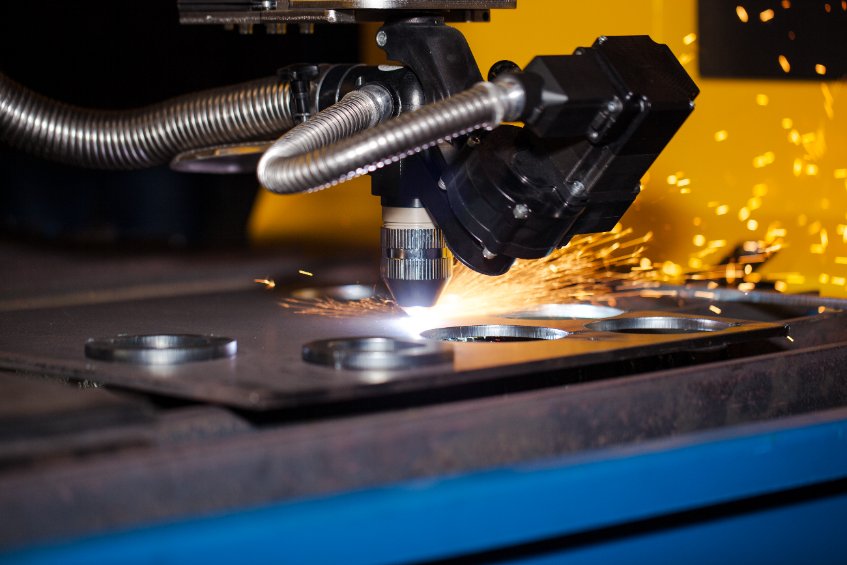Tim Dufault, FAIA – Concert CRO
At Concert, we are all in on digital project delivery, it is the future of design and construction. However, for many, it is hard to envision what this looks like. How is it any different than issuing drawings? Let’s look at one specific example of how digital delivery is changing the design and construction process, for the better, and how Concert facilitates this process – Structural steel design, fabrication, and erection.
Arguably, the steel design and fabrication processes are the most digitally integrated within today’s construction. The process of translating a design concept into direct fabrication information has been evolving for more than 10 years. BIM software products like Trimble’s Tekla have automated the design, detailing, cost estimation, and fabrication management processes. This greatly reduces the time required for an engineer to communicate the structural system and for the fabricator to create it. Fabricators are further enabled by the ability to import this Tekla design information directly into their production systems resulting in a direct design-to-machine application.
Even though this has been an integrated process for years, two additional steps currently take place that can now be eliminated – the signing of structural design drawings by the engineer and shop drawings by the fabricator, for approval by the engineer. These two paper-reliant steps are there to act as the record that protects the parties from any claims when there is a mistake. Concert eliminates paper-based processes and provides a permanent, independent, and immutable record of all information shared, eliminating the need for this inefficiency. Here’s an abbreviated version of what the workflow would look like:
- The engineer designs and models the structural system, calculates the loading, sizes all the members, and models the connection details. A QC review is conducted to determine if there are any clashes, missed or errant information, or non-conforming conditions.
- The engineer records the BIM and any other necessary design information on the Concert platform and creates a combined Collection for distribution and, if necessary, signature (this replaces the signing of drawings, and allows the engineer to directly sign digital information). At the point of distribution, the engineer states the specific uses for the BIM and design information (I.E., for pricing, permit, fabrication [in part or whole]). This creates the first permanent record of the information on the Blockchain.
- The engineer distributes the Collection. The receipt of the information by the general contractor, fabricator, and erector is recorded, establishing the first link in the chain of custody.
- The fabricator reviews the information and applies it to their production system. If there are questions about the design or cost/value suggestions, the fabricator creates a Collection and shares it with the engineer for feedback. The engineer provides their feedback and creates a Collection to share back with the fabricator. The second and third links are created.
- The fabricator reviews the design and creates its sales documents. These are recorded as a Collection, can be signed, and distributed to the steel erector through the Concert platform, recording the information as part of the chain. This can be structured through a separate user login to protect proprietary information. The fourth link is created.
- The erector creates its sequence of erection and develops any temporary shoring/connections required. They create a 4d (time) layer to the BIM and, if necessary, suggest alternatives based on constructability. These are recorded in a Collection and shared with the engineer, general contractor, and fabricator for feedback.
- All parties review the information and when consensus is reached, a final “approved” Collection of the BIM and other design information is created, signed, and distributed. The fifth link is created.
- As final design decisions are made, any changes to the structural BIM and design information are recorded in a Collection, signed if required, and issued “For construction”. The sixth link is created.
- The fabricator moves into production and records a final “As fabricated” Collection. The seventh link is created.
- The erector’s field team reviews the information they have on-site. To determine if they have the correct information, they conduct a review by dragging the digital design data they have into the Concert platform. Concert displays the version, authorization, and validity of the information referenced. If it is the current and authorized information for erection, the team begins the process of installing the components as detailed. If field changes occur, the team notes the areas of change on the BIM, creates a Collection, and distributes it to all parties, requesting all necessary approvals. The eighth link is created.
- As the structural work completes, the erector and general contractor make notes in the BIM of all conditions that changed during construction and record a final “Record” Collection. This is distributed for review by all parties in the process. The ninth link is created.
- The “Final” Collection of the BIM and other design information is recorded on the Concert platform and distributed to all parties. The tenth link is created, completing the chain of custody.
By the end of the process, a clear chain of custody and communication is permanently recorded. The record is always available, from anywhere at any time, regardless of where the actual information files live. Gone are the opportunities for error and misinterpretation that come from a paper-based process, along with the additional steps and time required to re-create information already created.
This is a very abbreviated description for example only. While a more complicated interaction would be likely in real life, the fundamental processes remain the same. We would be happy to go through more complicated processes with our customers.
Concert is an essential tool for digital project delivery. Concert creates a clear and permanent chain of custody in the exchange of design and fabrication information. Without Concert, there can be no confidence that authentic and authorized information is always in hand.





